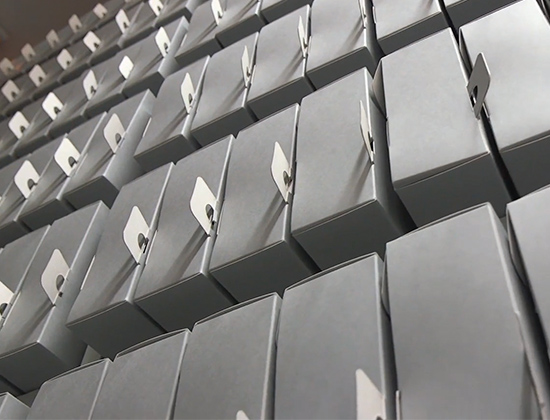Preventive conservation: Which packaging?

Preventive conservation: Which packaging, for which use?
The works and documents stored in the reserves of a museum or a library are like people: they age with time.
In order to fight against this natural aging process, it is necessary to take preventive conservation measures so that they can survive the years without too much damage.
WHY PREVENTIVE CONSERVATION?
Until 1850, paper made from rags was very well preserved, much better than paper made from cellulose, a manufacturing technique that appeared after 1850.
This explains why documents printed or used for drawings, after this date, deteriorate faster than older ones which, paradoxically, are better preserved.
Certain factors aggravate this risk of deterioration: light, variations in temperature and relative humidity and finally any form of pollution.
The light
Ultraviolet rays obviously cause photochemical degradation, but artificial light from lamps and electric lighting is not completely harmless either.
This is why, during temporary exhibitions, the time of presentation of the works is measured.
Some of them are not very well lit because ten hours of exposure under 100 watts is equivalent to one hour under 1000 watts. This is why the documents must, at some point, return to the dark, so that the aging process is slowed down.
Temperature and relative humidity variations
As with good wine, large temperature variations are harmful to the works to be preserved. It is therefore necessary to control the climate and ensure that they are sufficiently protected to avoid these sudden variations.
It is also necessary to monitor the hygrometry rate, i.e. the humidity. A work exposed to more than 70% humidity can start to mould in less than 48 hours and certain traces can remain indelible.
It is therefore important to store these works - well protected at the outset - in air-conditioned premises. A recently revised standard - ISO 11799 - recommends the use of new materials and architectural complexes north of the Loire, where the climate is more temperate, to restrict the use of artificial means that used to control the climate inside storage rooms.
This is to limit the risk of incidents due to maintenance and technical problems of air conditioning systems.
External pollution
One naturally thinks of the cleanliness of the environment of the works to be conserved. Very often, museums are located in the heart of cities and pollution, loaded with acids, is particularly harmful, which implies the use of cellulose packaging with an alkaline reserve that can, for some time, neutralize the impact of this pollution.
It is also necessary to limit the handling of the works of art because it can be a source of aggression, either by sprays or by the acidity of the perspiration deposited by even the driest of hands. Moreover, these can leave fingerprints on the paper. Protective measures such as the use of gloves should be taken to limit these risks.
HOW TO CHOOSE THE RIGHT PACKAGING TO PROTECT YOUR WORKS?
To protect your collections from light, humidity and any external pollution, it is necessary to preserve the documents or works (drawings, engravings, photographs...) by a double packaging. They are first stored in pockets, then these pockets are stored in boxes or boxes-folders.
There is always a primary and a secondary packaging for an optimal preventive conservation. This also allows for a structured archiving for the long term.
Pockets
The least expensive are those made of paper. However, they entail risks during handling, or during rubbing when the document is extracted.
Other solutions are a little more expensive, but have a huge advantage: plastic pockets (polyester or polypropylene). Their transparency allows the consultation of the documents without taking them out of the pocket. This prevents them from being touched and handled.
The boxes
There are several types of protective boxes depending on the works to be preserved: different sizes, in different materials that correspond to different levels of conservation.
There are top-of-the-line boxes, such as the "Museum" type boxes selected by the Louvre's graphic arts department to preserve and enhance its collections of drawings and engravings.
These are very solid boxes for consultation. They are generally reserved for VIPs. They are quite expensive - between 50 and 100 euros depending on the format - and can hold twelve documents per box.
These documents are then "mounted": that is to say inserted in a mat which has a double advantage. On the one hand, when you hold it, your fingers only touch the support and not the work.
On the other hand, it allows the documents to be ready for display in standard frames. The passe partout - known as 'Marie-Louise' for a fabric that is part of a frame - can be beveled, which enhances the work even more.
For mass archiving at a lower cost, there are conservation boxes made of microflute, corrugated cardboard or honeycomb polypropylene. But of course the document is less valued.
THE STANDARDS
These conservation packagings are governed by national or international standards, in particular ISO16245 type A and NF Z40014 (cellulose packagings), NF Z40012 (plastic packagings), ISO18916 (photo packagings).


